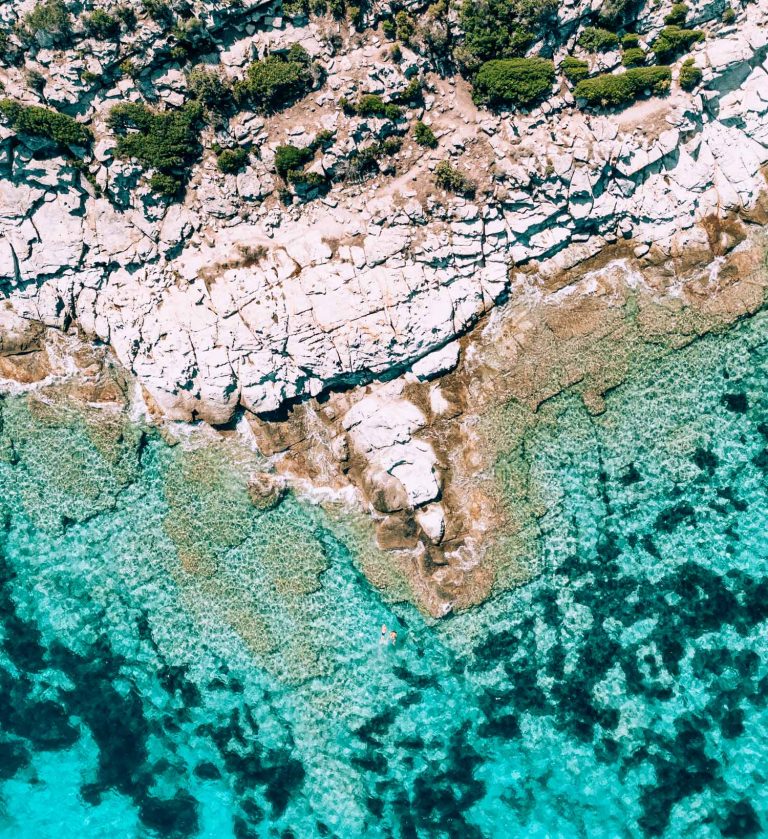This post contains affiliate links. Using these links will not cost you anything extra, but makes sure I earn a small percentage if you buy through those links.
From the sunny limestone coast of Montenegro, it was time to go to the green mountains of our next destination: Bosnia Herzegovina. A country which I mainly knew from my conflict studies experiences and knowledge of the war and genocide in 1995, I felt a desperate need to put a face to a country that had suffered so much and feel the energy of the place, more than a quarter century later. We were completely blown away by the openness with which Bosnians spoke about the war and their hospitality towards strangers. The views of mosques, rivers and mountains equally surprised us with their beauty, as we toured through Mostar and Konjic on our way to Sarajevo.
From somersaults of bridges and cliffs, to racing down rapids on the Neretva river, this travelogue covers our experiences with UNESCO World Heritage Sites in Mostar and rafting through canyons in Konjic. Reflecting on where to go and where to stay, this blogpost is meant to inspire you and help you organize your own Bosnia Herzegovina itinerary.
Stari Most, Mostar’s Almost Anagram?
A call to prayer echoes through the air as we walk closer to the Old Town of Mostar, Bosnia Herzegovina. The air is hot and buzzing with anticipation of the dinner to come and the beers to be drunk on the terraces overlooking the Neretva River. For Wessel and me the day has been long. We woke up around 5AM, to take a taxi that our lovely Airbnb host Goran in Bar, Montenegro called for us. Once we arrived at the grey and gloomy bus station, the lady at the ticket counter told us we could only pay in cash, meaning Wessel had to run to the nearest ATM. Despite the views of a landscape filled with yellow grass, green shrubs, rocky rolling hills that turned into mountains and even a herd of wild horses, we slept most of the way to our first stop in Bosnia.
On our fifth country of our Interrailing trip, we had figured out train travel between the Adriatic Balkans was impossible. There were no trains running between Montenegro and Bosnia Herzegovina, making bus travel the preferred choice of public transport. As we got to our apartment after that long, but comfortable trip (it had recliner seats!), we found a brown and grimy room of which we did not dare to inspect the walls too closely. We decided to explore Mostar for as long as we could, before having to dive into bed that night.
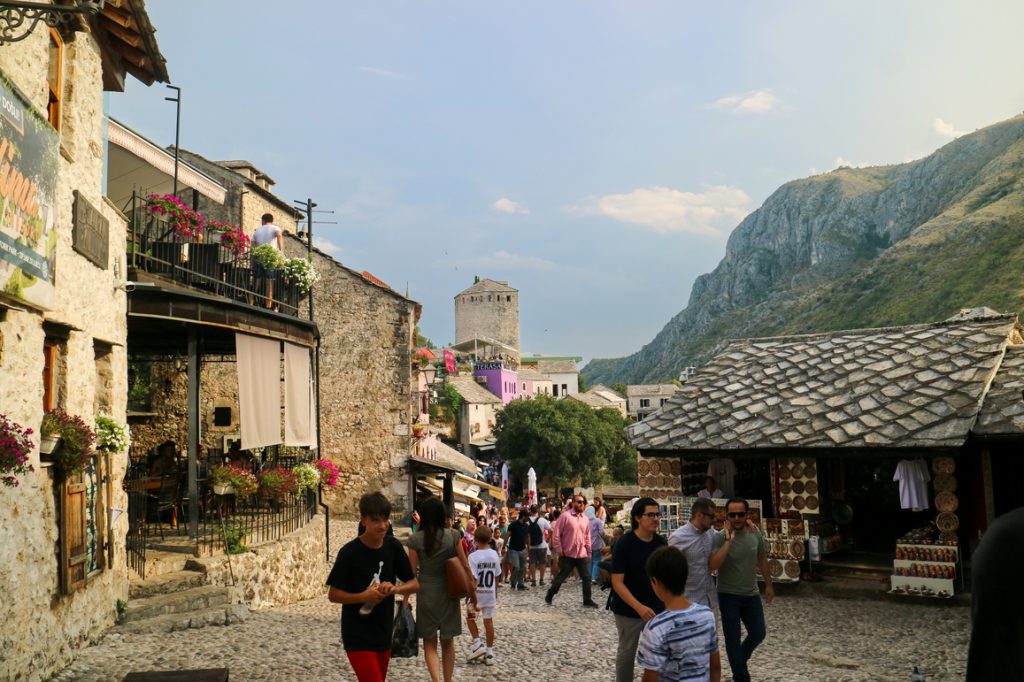
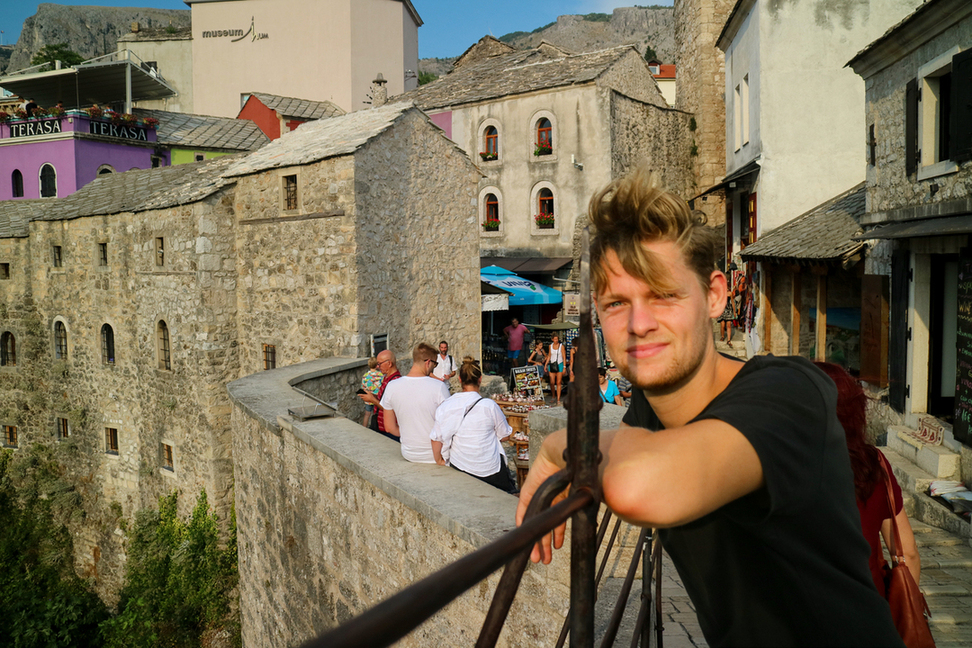
As soon as we turned the corner into the Old City, the views slapped us in our faces. The streets were covered in soft square stones and lined with low ancient buildings with thick walls and slated roofs, where you could imagine craftsmen of ages past working in their shops. Besides its architecture, its historical infrastructure has been the face of Mostar since travel influencers have found the spot, taking pics with their selfiesticks and dresses flapping in the wind. But perhaps Medieval influencers had the same idea, as the city takes its name from the bridgekeepers in the Middle Ages, which is called Stari Most, meaning “Old Bridge.”
As we neared the famous landmark, we could hear cheers getting louder and louder. Reaching the water, we could see why: the bridge, arched some twenty-four meters above the river, and the city seemed to revolve around the spectacle taking place on top and under it. Muscled men in tight speedos stood atop the rail, closely guarded by another one on the pavement, collecting money from curious tourists. We stood there for about ten minutes, when the guy jumped, making somersaults in the air before stretching himself to make a clean dive. Once he hit the water, a dinghy sped towards him to pick him up, so he could hike back up the bridge from the riverside.
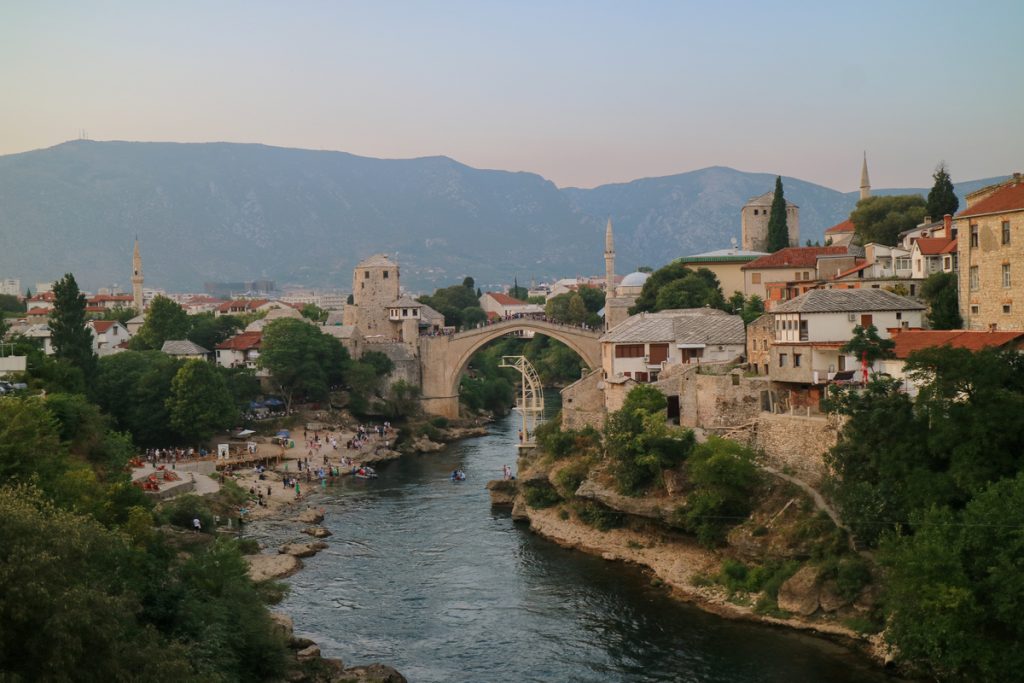
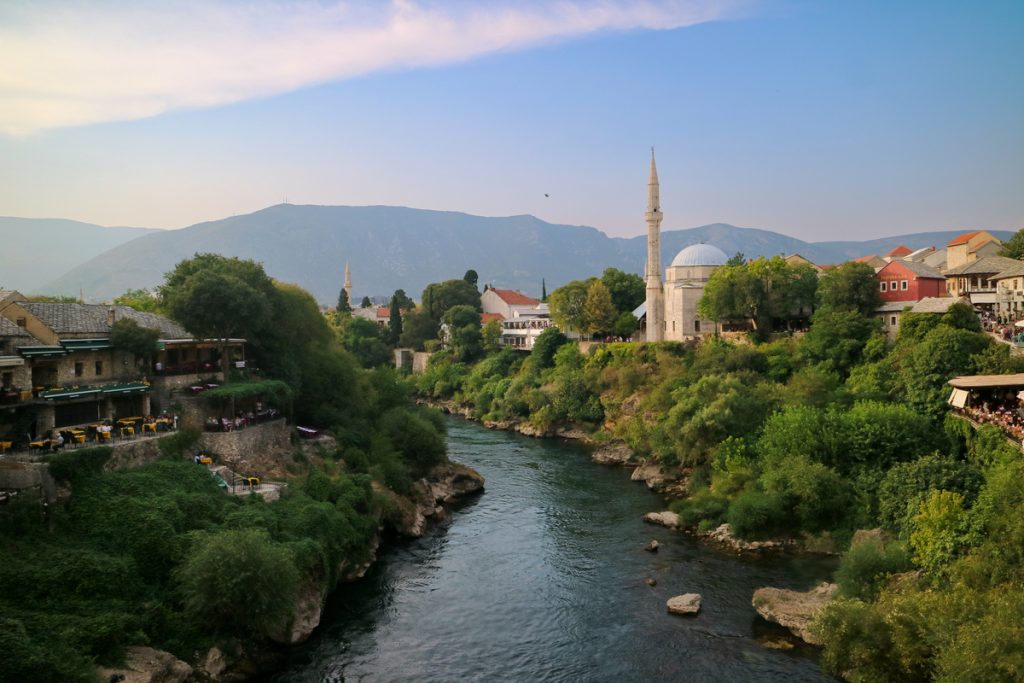
Impressed by the show that was put on for us, we turned to look at the view of the city from the bridge. Bosnia Herzegovina turned out to be much greener than we had anticipated. The houses and minarets poked through a roof of leafy bright green trees lining the river’s edge, making me feel I was looking at the Nile in its full glory. Even the restaurants that sat right on the water, had foliage covering the pergolas and flowerpots lining the railings on their terraces. We sat down at one with purple trumpet-shaped flowers, to enjoy this tapestry of tranquility, and hoped to see some more adrenaline-jumps on the bridge as well.
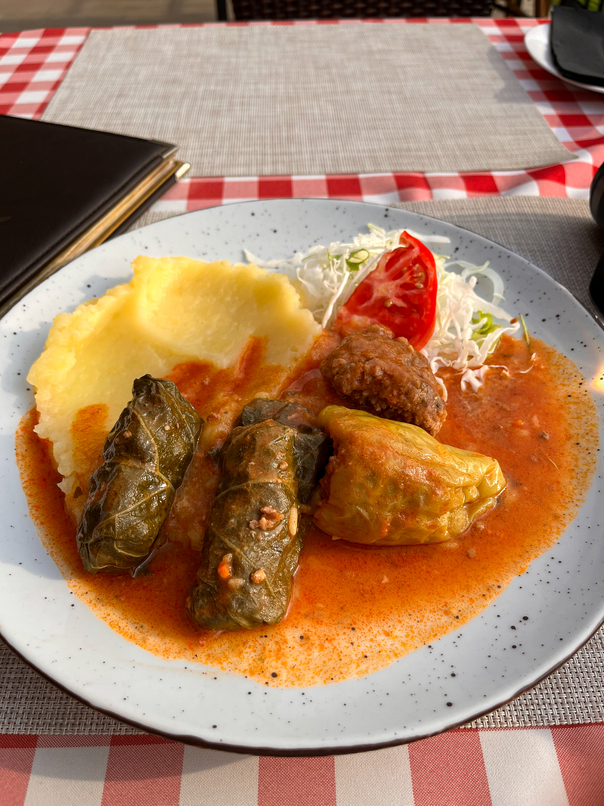
As the sun set over Mount Hum, we were served pita with kebab and dolma with mashed potatoes and greens. Dolma, stuffed vine leaves, are probably one of my favorite snacks, but these tasted way better than the canned one’s I usually buy at the supermarket. These juicy ones were filled with rice, minced meat, and tasty herbs, while covered with gorgeous gravy. Usually jealous of Wessel’s gluten-filled dishes, I was very happy with my choice this time.
We washed it all down with beer and wine and sat out to explore the city a bit further. Mostar is a maze of pedestrian streets that are all lined with shops that sell their wares on a stand outside. Most of them sold magnets, keychains, and colorful crocheted jewelry: all the touristy stuff. Nevertheless, the people were so friendly and welcoming, that our fellow tourists took on a serene energy as well, making our walk through this historical place like a meditation.
Somewhere along the way, we had some drinks at a bohemian looking café, and bought some breakfast for the day after (up until now during this trip, I had been carrying Nutella and bought gluten-free bread anywhere I could find). Drowsy from the wine, the sun, and the bus ride, we headed back to our grimy apartment to catch some sleep before leaving again the next day. Although we could finally take the train and relax a little, we were mentally preparing for some actual adventure in the Bosnian mountains.
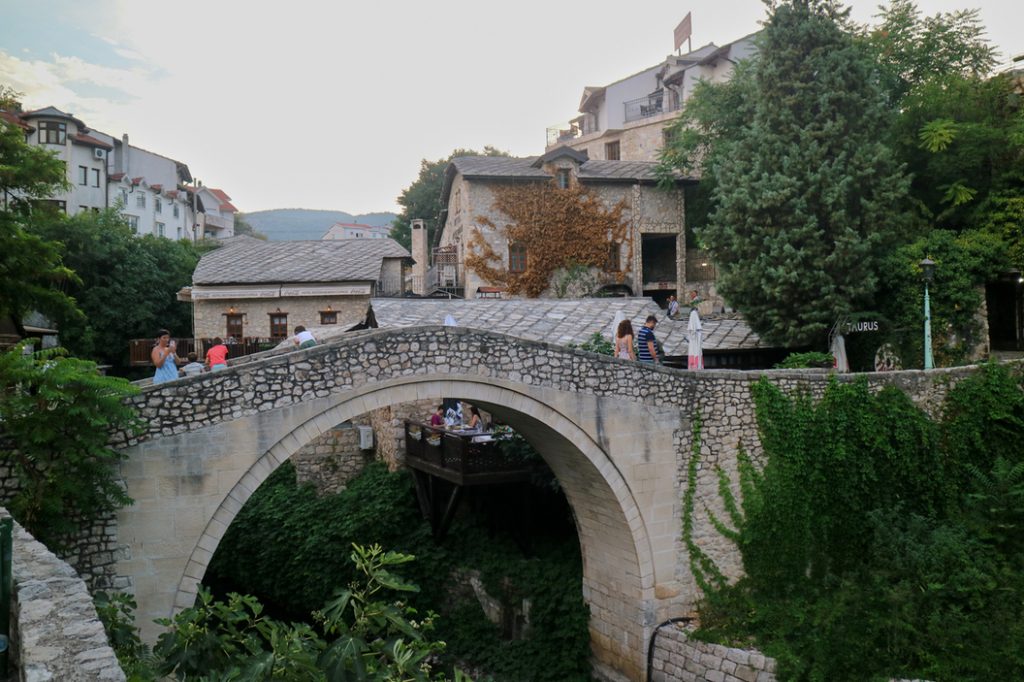
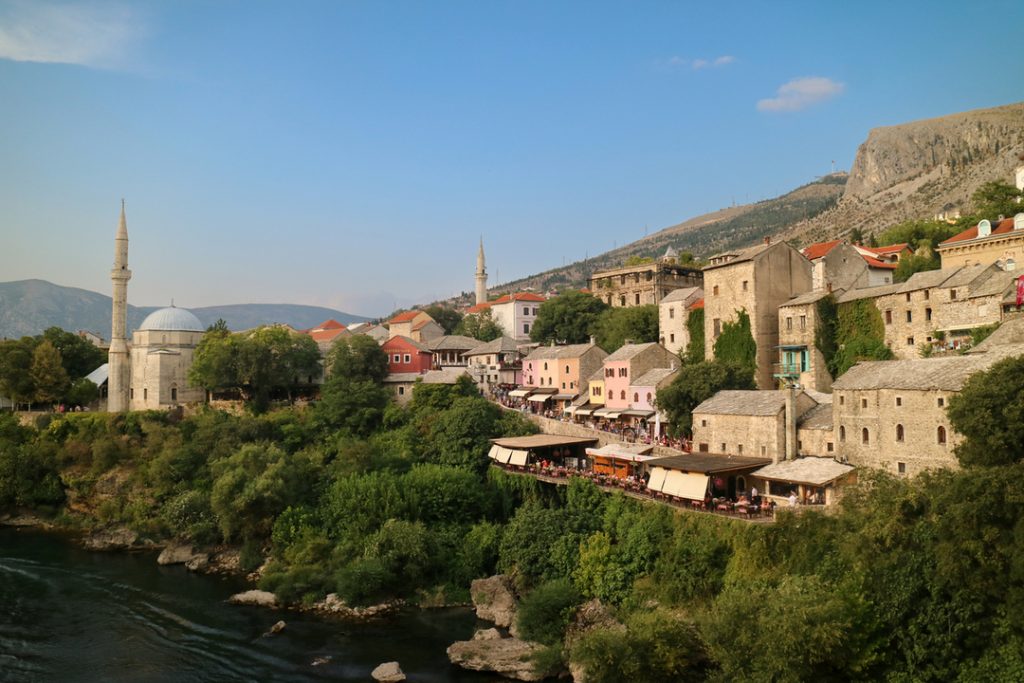
Where to Stay in Mostar
Do not stay at the same brown apartment at the edge of town like we did. Even though we survived, I was afraid critters would come haunt us that night. Instead, take your pick from these wonderful hotels:
- Hotel Sinan Han: These mid-century modern looking rooms are just to die for! This is how you do brown, without the grime. Add the comfy, cozy beds, the tiles on the walls and the rooftop terrace overlooking the city, and you got yourself a wonderful stay.
- Villa Gunga: With part of the building carved out of stone, and the rest built from the same rocky material, Villa Gunga lets you experience Mostar how you should: with a room overlooking the river and breakfast with a view of the city. How I wished we had stayed here!
- Hotel Villa Milas: For those who prefer to stay in fancy new buildings, this one is for you. With clean rooms and, according to the reviews, superb breakfast, you will be able to stay out of the busy streets, while only being a five minute walk away!
A Trip to Tito’s Bunker
Our first train in over two weeks on our interrailing trip (isn’t that hilarious?) the next morning was very comfortable and brought us to our next stop in no time. Albeit dating from the 14th century, Konjic is known for its even older surrounding mountains and outdoor activities. Or should I say activity? It has some of the best rafting experiences in the country and you can thus find rafting tour companies around any corner. The next day, Wessel would finally join the twenty-three club, and I had booked a tour as his birthday present.
After checking in at our lovely Airbnb which was owned by Marko, whom we would meet up with again later, we searched Google to find something interesting to do. The closest historical site, except for the town itself was Tito’s Bunker. Josip Broz Tito was the infamous Yugoslav president from 1953 to 1980. Caught between the East and the West during the Cold War, he built his nuclear bunker called ARK-D0. While this was a top-secret, billion-dollar project, it was never used.

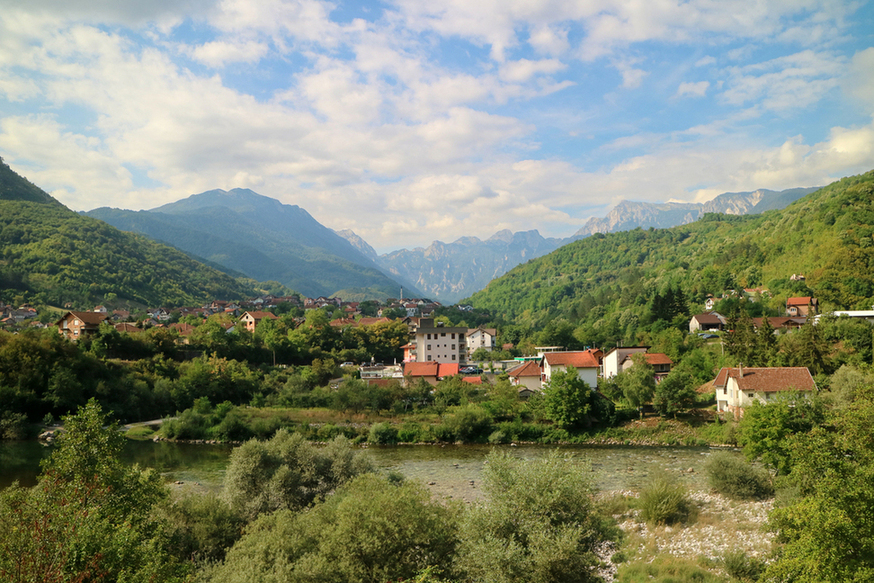
Intrigued by the prospect of such a doomsday site in the midst of natural beauty, we sat out to fill the last spot on the tour that afternoon. We decided to walk there, but after having to take a detour, we felt time slipping away. Luckily, we still had some hitchhike skills up our sleeves, and managed to hitch a ride with a lovely family. Even though there car was full, they told their tween boys to sit in the trunk, so they could take us. Not expecting it, and a little embarrassed we could not return the favor, we told each other we really needed to start earning some karma points to repay the good that has been offered us on this trip.
Reaching the bunker, you would not expect that the mountain was filled with such a stronghold. There were some buildings lining the hill, but nothing suspicious. One of them, however, led to the entrance its entrance. Within the long tunnel illuminated by cold LED lighting, the air was moist and got chillier the farther we walked. During the tour, we saw the rooms where soldiers’ bedrooms, several boardrooms for Tito’s crisis meetings, and numerous technical rooms with water makers and radiation detectors. The furniture came straight out of the previous century, but some hallways and rooms were decorated with an art exhibition commemorating the war and atrocities that happened in Bosnia Herzegovina.
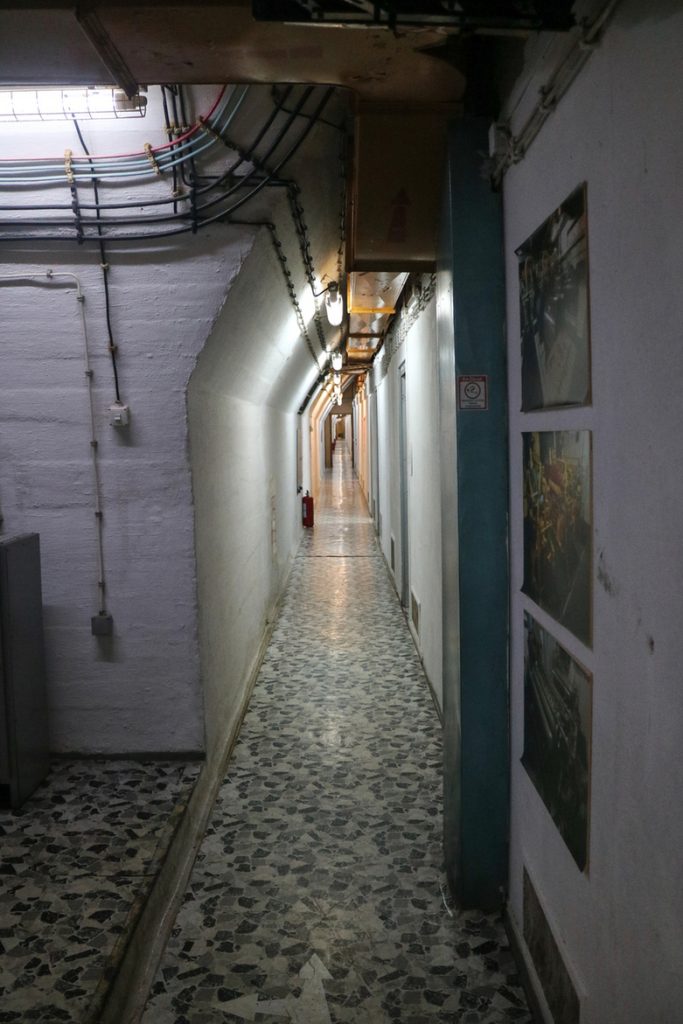
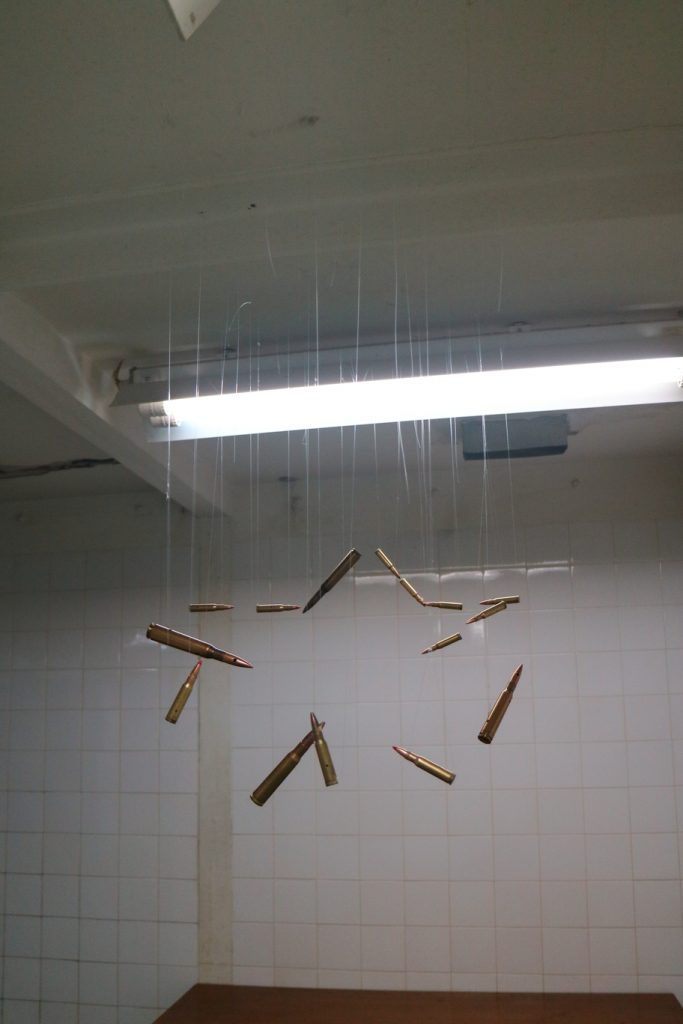
Dinner and Drinks in Konjic
The tour was interesting, even though I could not understand most of what the tour guide was telling us. Luckily for us, once we got out, we could hitch a ride back to town with a wonderful couple. After making plans with Marko to have drinks later that evening, we found a restaurant on the Neretva river where we had cevapi, once again. The food was good though, and the vibe was very relaxed: families were having dinner with their kids playing around the spacious terrace and you could hear the water lapping softly. As bees hummed from purple to pink flower, I completely fell in love with Konjic.
After the sun had set, we met Marko and his friend at a local bar, where he bought us drinks and we had the most interesting conversations. We talked about the war, communist Yugoslavia, and how that had impacted his life and outlook on his future. Wessel and I were both pleasantly surprised by the friendliness and hospitality we had felt since arriving in Bosnia, and Marko was no exception. After a night of grave discussions and horoscope readings – Marko, like everyone, was surprised I was a Gemini, but said it totally made sense after I revealed my rising to be Cancer – we headed back to the Airbnb where we had booked a room.
The house had an overflowing garden where I could cuddle Marko’s dog and where he offered us his homemade reiki and more conversation. I politely declined the reiki, as I had already had enough alcohol and was quite nervous for our rafting experience, but Wessel said it was very good stuff. A little tipsy, we all said goodbye, and fell fast asleep.
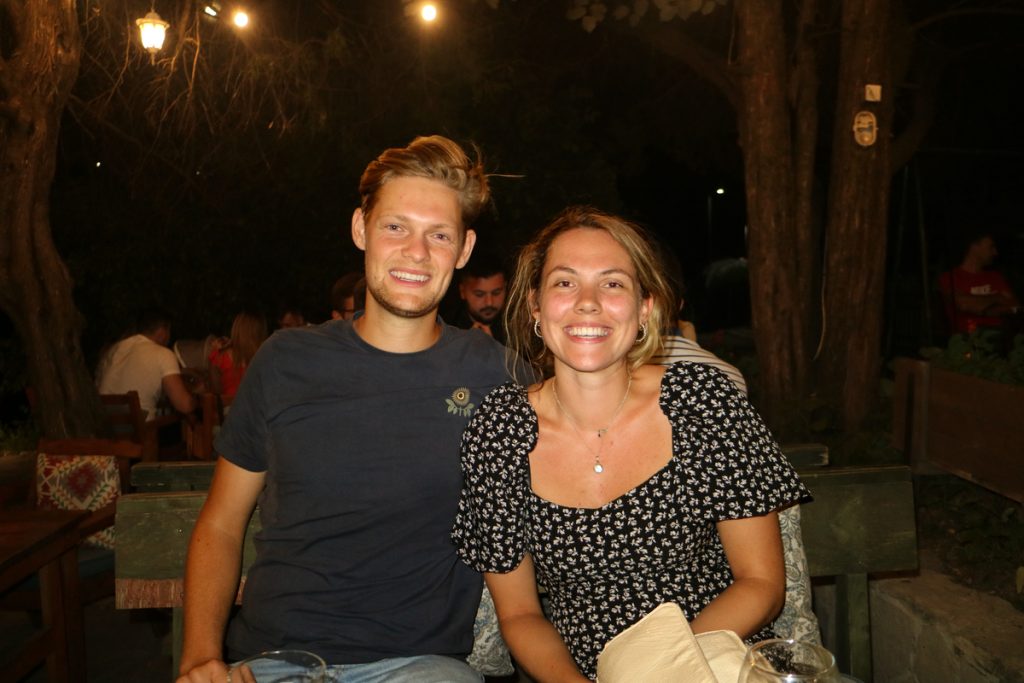
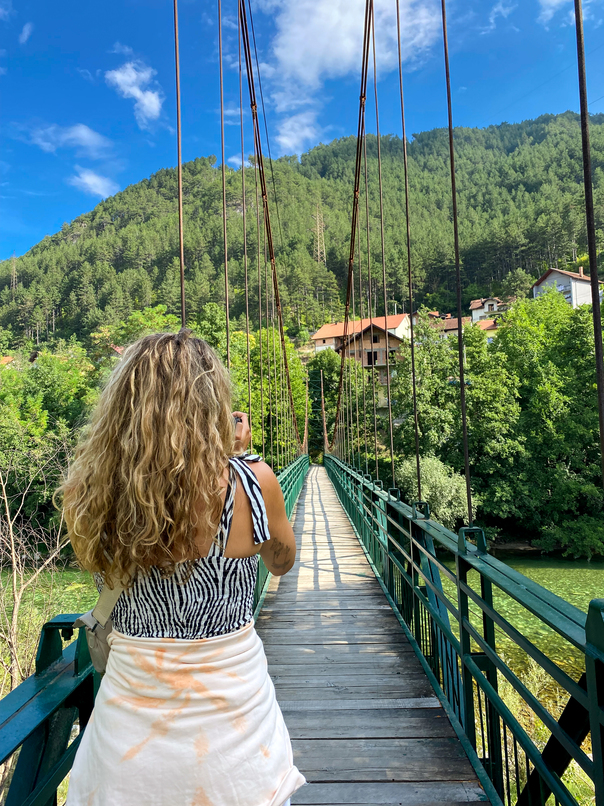
Rafting on the Neretva River
“Paddle paddle paddle, let go!” our rafting guide of Raft Kor yelled before the current caught us and we tumbled down our first rapid. Adrenaline pumped through my veins and Wessel was looking ecstatic: I had no idea what to expect that morning, but at that moment I was glad I stepped over my initial fears. “This is amazing,” I exclaimed, and Wessel and our fellow rafters laughed. We were sharing a raft with a friendly couple from the States, who had chosen Bosnia Herzegovina as their honeymoon destination.
White cliffs lined with the history of the river and lush forests with beech and pine trees glided by as we let the current carry us downstream. Our rafting guide told us the river becomes a couple of meters higher every winter and pointed to the cliffs to show us the markings. “Rafting in winter? Very dangerous,” he told us, and explained how the currents became so fast, not even the best rafter could triumph and control their speed. For a sixteen-year-old teen, whose summer job was guiding tourists down the river, he was as knowledgeable as any fifty-year-old guiding the other boats. Talking to us about the Bosnian war and how rafting became synonymous with Konjic. (I did not take my camera, so please enjoy some photos of Konjic instead)
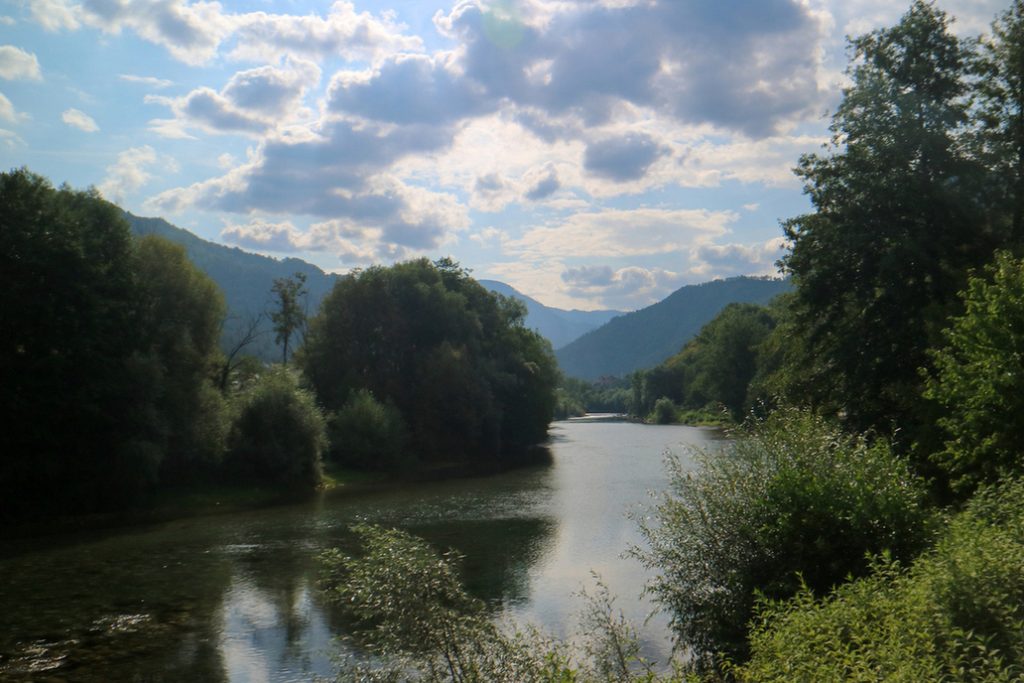
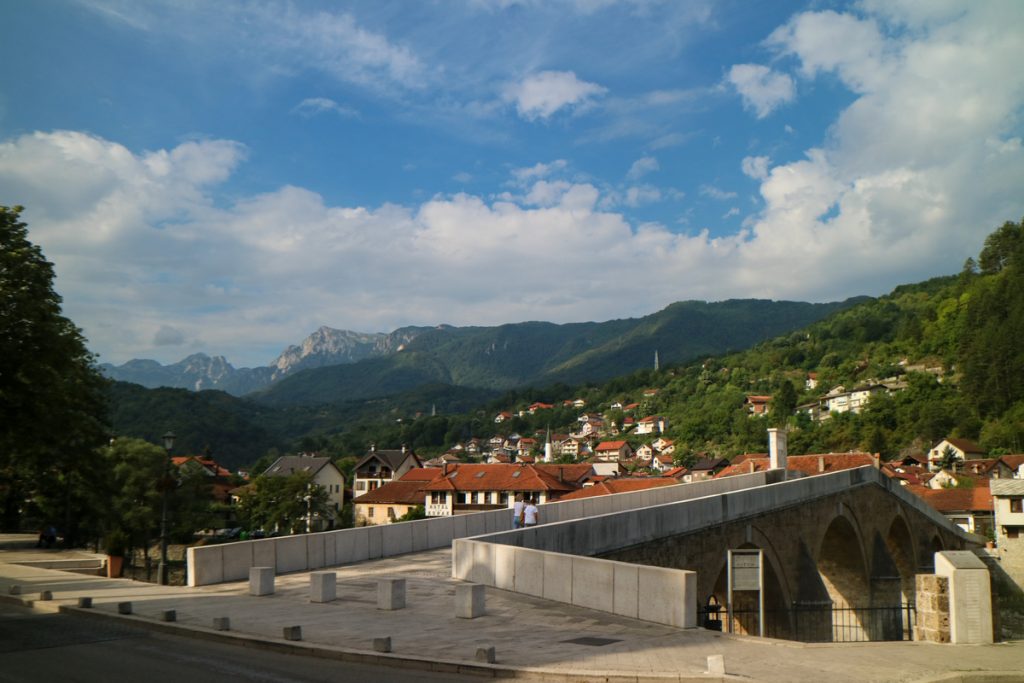
Halfway through the morning, we stopped next to a cliff of about ten meters tall, of which we were allowed to jump. I had never jumped of something that high before, and strongly debated whether I should try it this time. Seeing everyone jump off, even those as scared as me, I decided to quickly climb up. As I reached the top I did not pause to look down and just jumped. The adrenaline rush made me burst out into giggles, proud I pushed myself to have more fun.
Some paddling and rapids later, we reached a pebble beach where the crew would prepare lunch. Barbecues were set up and smoke twirled through the air, as did the smell of grilled cevapi and pita. I had called beforehand whether a gluten-free meal would be possible, and they had bought some bread for me, which they cooked separately. With some salad and soda, we enjoyed the meal in the sun, looking at the river streaming past and birds circling our delicious food.
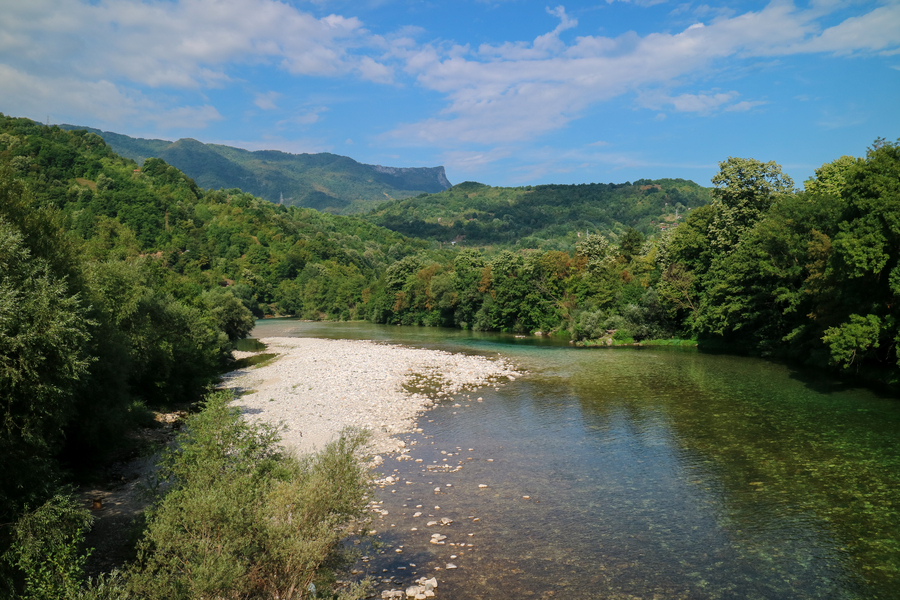
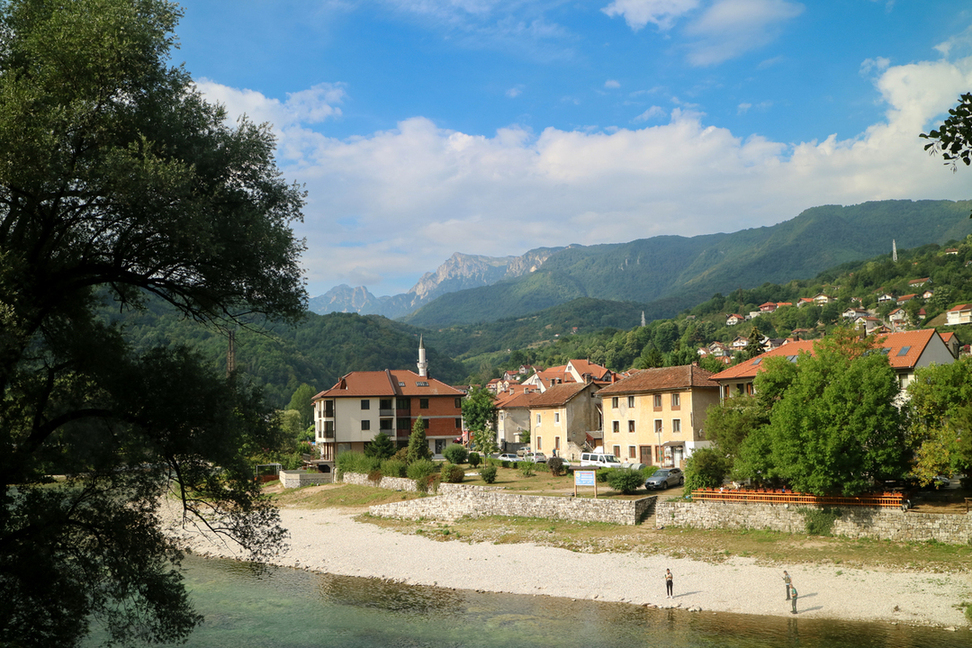
After lunch we made our way down the rest of the river and sped through some big rapids. There even was one where we could jump into, and let the current carry our bodies back to shore. Confident after my dive off the cliff, I jumped into the water, and despite my lifejacket, my airways filled with water. I knew then drowning would be a terrifying death. Coughing and crying I made my way back to shore, shaking from the shock. I could not understand how all the others enjoyed this and were able to breathe.
I quickly got over it, though, and enjoyed the rest of our afternoon. At the rafting headquarters, we were able to take a shower and get warm, which was needed after peeling off our drenched wetsuits. Our plan was to take the train to Sarajevo afterwards, and we ended up there drinking some coffee with our American pals. Reaching the platform however, we waited and waited, but the train did not come. Eventually we were told the five PM train did not run today, and we had to wait until the nine PM one in order to get to our final destination. Bummed out, we sat around, waiting: I had booked a fancy hotel for Wessels birthday, and was sad we could barely enjoy it once we got there. Still, our experiences in Konjic were definitely worth it, and his birthday was a blast!
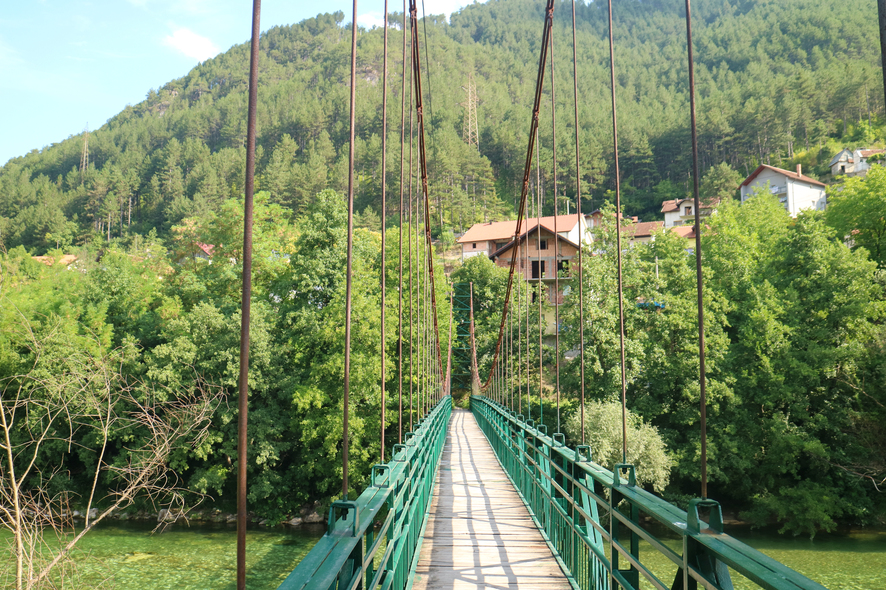
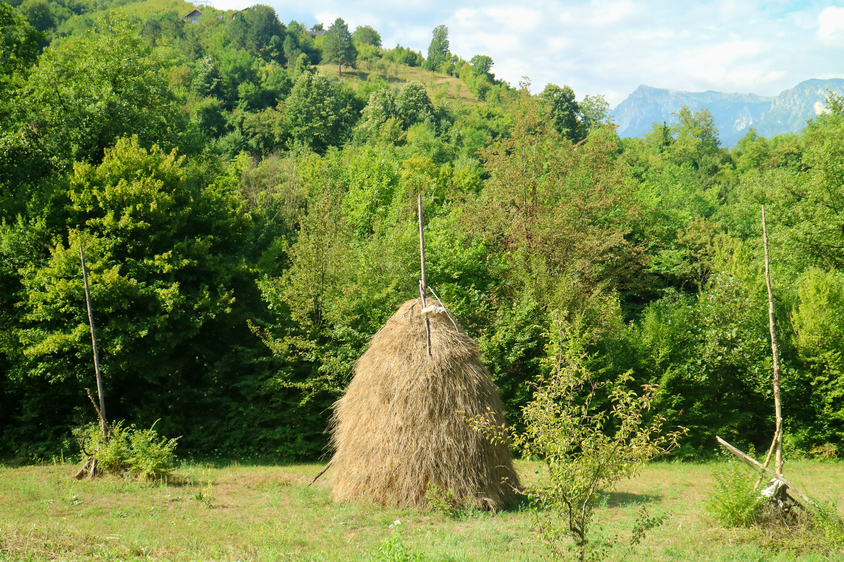
Where to Stay in Konjic
We had a great time at Marko’s Airbnb and savored the conversations we had and people we met because of it. But, if you prefer a hotel for some more privacy, I have picked my three favorites for you below:
- Green River is an apartment complex right in the center of Konjic. I always love staying in apartments, as you are able to cook your own food and really take the time to relax. With the menus at restaurant being limiting to gluten-intolerant travelers, this would be a great place to stay.
- Josanica Bed&Breakfast has a pool. A pool! I love unwinding in the water after a day of hiking and other adventurous sports, so if that is your style, this is the place for you. With clean, modern rooms, breakfast, and a view of the river, this B&B completely makes up for the distance from the city center.
- Apartmani Lux Novalić is, as the name suggest, for the luxe traveler. Still affordable, this one also has a pool, but is a little bigger and located in Konjic town. Get yourself a cocktail and a book, and you will find yourself in heaven.
Final Thoughts
Bosnia Herzegovina surprised us the moment we entered the country. We had swapped the dryer limestone coasts for green mountains, canyons, and rapid rivers, and we were not disappointed. Despite following the touristic route from Mostar to Konjic, we could not recommend going to both places more. Mostar is crowded, yes, but oh so beautiful and full of rich history, while Konjic forms the perfect gateway to the Bosnian mountains. If I could give you one tip on what to do here, it is rafting!
If you want to know more about what we did in Sarajevo after these two lovely towns, then stay tuned for the next one. If you want to stay up-to-date with all of my travel blogs in the future, make sure to follow me on Instagram or sign up for my newsletter, and get a gluten-free world map, for free! Cannot wait? Then catch up on our latest Interrailing posts from Albania and Montenegro.


